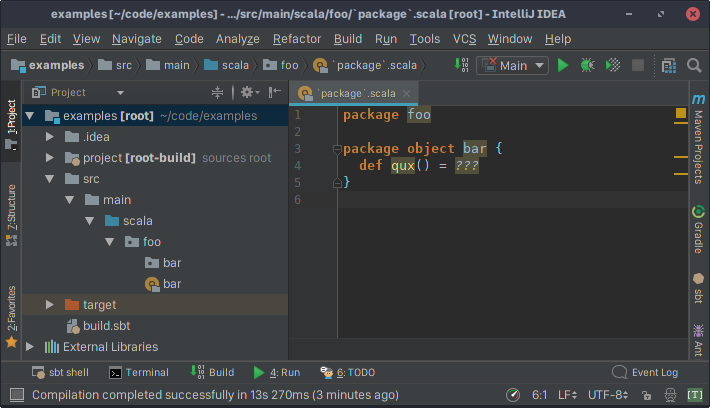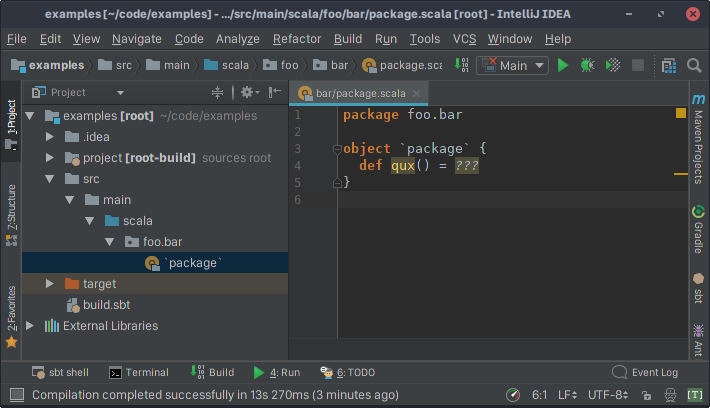Language Design: Package Objects in Scala
Scala has the concept of package objects which allow the declaration of methods, classes etc. that appear as if they existed directly inside a package, not enclosed in an object or a class.
Given the definition of a method qux for a package foo.bar, the method can
be called with foo.bar.qux().
The Issue
Package objects are useful, but the way they are defined is pretty weird, and one of the obscure, inconsistent and hard to explain decisions of the language:

- The package clause is
foo, notfoo.bar. - Given the package clause, the file package.scala is placed outside of the directory for which it defines members, further obscuring what it does.
- The file name (package.scala) is not in sync with the name of the package
object defined (
bar). - There is some special syntax,
package object, that is not self-explanatory. - It is hard to quickly identify package objects, as IDEs tend to show the name of the object and not the name of the file in the outline.
- It also means it is unnecessarily hard to find package objects: To see whether
foo.barhas a package object, you have to scour the parent packagefoofor an object with the same name as the package (bar).
The Solution
Here is a design that addresses these issues and is intuitive enough to not require a separate, explicit explanation of what package objects are, which rules need to be followed and how they work:
// file: foo/bar/package.scala
package foo.bar
object package {
def qux = ???
}
The Workaround
As is it unlikely that this will ever be fixed, the best approach to package objects is to ignore the confusing syntax completely.
Instead, directly define them this way:

Coincidentally, this is exactly the transformation the compiler already does when compiling package objects. It side-steps all the unnecessary language complexity that was put on top of the concept of package objects.